Photos To Hang In Bedroom
Photos To Hang In Bedroom
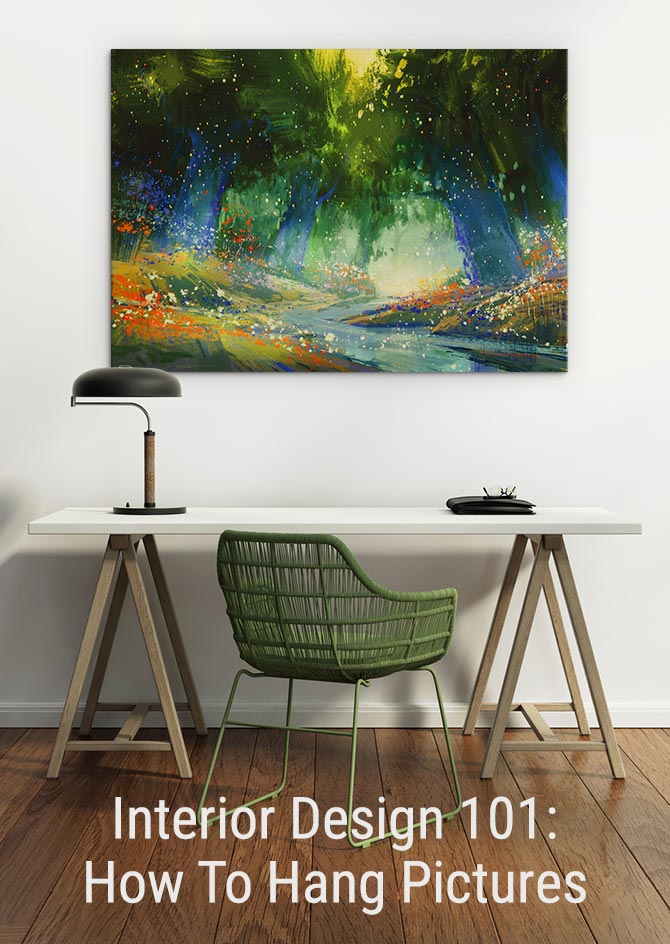
First things first. If you have a good eye for interior design, feel free to throw caution to the wind and hang your artworks wherever you damn well please (as long as it's not above the TV!).
However, if you're new to the art world or you've always found other things to do than understand the art of home decor then knowing how to hang pictures is a skill worth learning.
Whether you're moving into your first home, revamping an existing home or simply purchasing a new art piece, these tips will serve you well now and into the future.
It's time to master the art of balance, white space, symmetry and creativity. Let's go hang some art!
Decorating a large, blank wall
It's every interior designer's dream and every home owner's nightmare. No furniture. No clutter. Just a big empty wall space. Where do you start?
It's all about going extra extra large. If you choose a small, medium or even a large print you will run the risk of the work getting lost on the wall.
If you have no furniture to frame the space, you have to fill it with the artwork itself. It doesn't need to touch the ground. Nor does it need to touch the ceiling. It just has to fill the massive void lower and higher on the wall than you normally would if you were hanging art above furniture.
As for the width, that really depends on the space you have available. If you have a narrow space, a super-sized portrait print will work otherwise go for landscape or panorama.
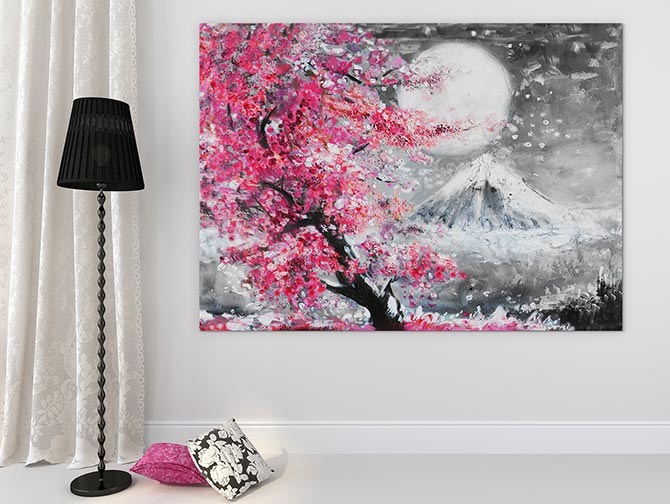
SUPER SIZE: This glorious 'Sakura Evening' print is the perfect candidate for the bigger is better philosophy.
How to hang prints above furniture
The good news is that hanging an art print above furniture – above a sofa, a bed or a couch – is a much easier proposition than dealing with an empty wall space.
The idea, without getting too far into the maths, is to use the furniture to frame the print then centre the artwork within the white space above the furniture.
Let's step through it much more in depth while enjoying some pretty pictures. If you get confused at any point, just refer back to this diagram.
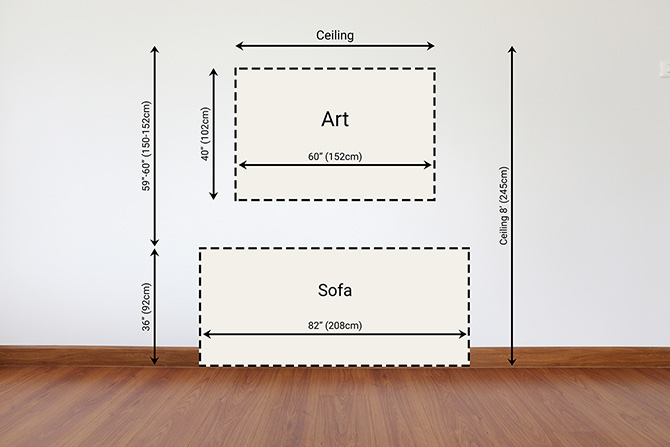
How to hang art above a sofa
While the general rule is to have a work of art at eye level, there are a few things to keep in mind.
Firstly, everyone is a different height so you can't very well cater to everyone.
Secondly, it makes sense to try to centre your print vertically within the space. That is, try and leave the same amount of space from the top of the furniture item to the bottom of the print as exists from the top of the print and the ceiling.
This might mean 'eye level' may not necessarily be the centre of the print – and that's OK.
When looking at this gorgeous print, below, positioned above this sofa, you'll see the print is centred vertically, perfectly. The size of the print ensures any eye can easily view the print.
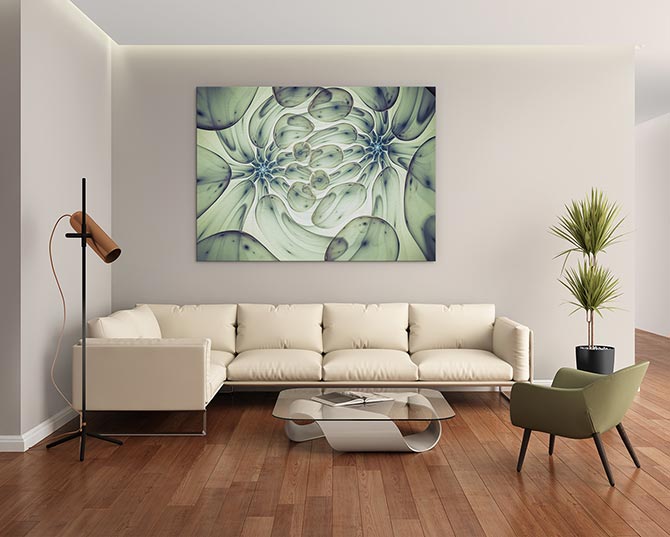
EYE CANDY: This landscape piece 'Emerging Elegance' is a superb example of how exceptional art can look above a sofa.
How to hang art above a bed
When using furniture to frame art, it's vital to ensure the artwork is centred horizontally using the width of the furniture as your ruler.
As you can see here, below, this romantic piece is completely centred, from left to right, in the space above the bed.
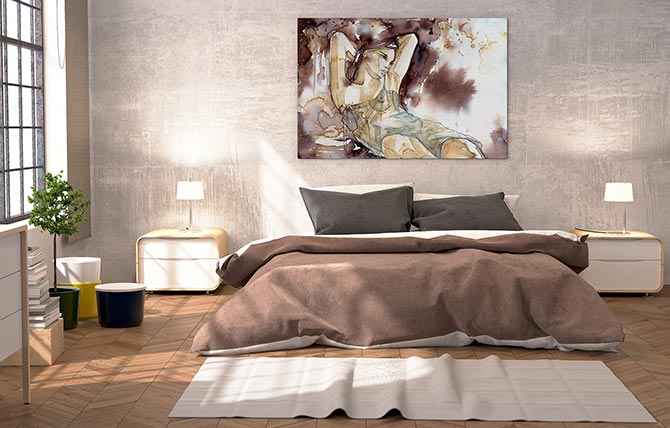
DREAMY: Sooth yourself to sleep with a perfectly positioned 'At Rest' bedroom art piece.
How to hang art above a mantle
The next thing to consider is the size of your print. This is perhaps the most important tip we have to offer and one of the most commonly questions we get asked; what size print should I buy?
If your print is to be located above a piece of furniture, we recommend leaving between 10-20cm from the left and the right of your art piece to the end of the furniture.
Whatever measure you choose, it must be the same on each side – centred within the space. Simply measure the width of the piece of furniture then minus the space you'd like to leave on each side and that's the width of the print you should choose.
The bigger the piece of furniture, the bigger the piece I'm afraid!
This space offered by this mantlepiece design, below, is simply begging for a square print. In contrast, sofas, beds and desks often demand landscape prints because the space available is often quite wide compared to the height of the room.
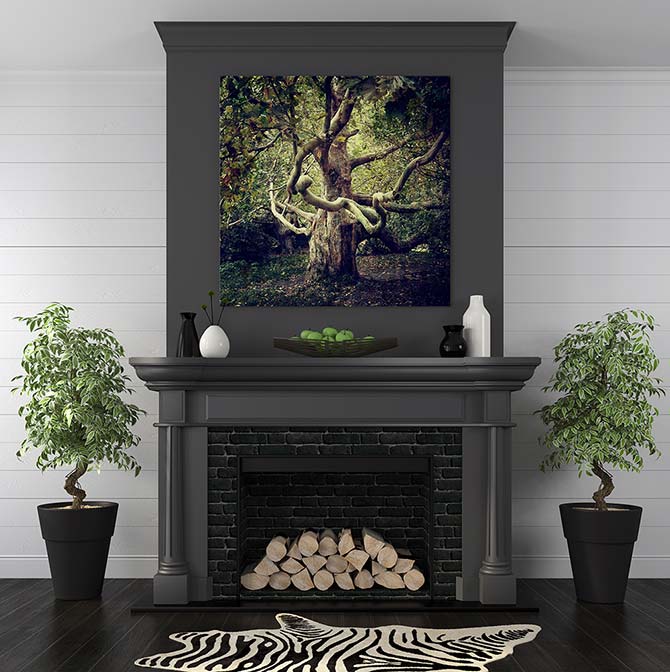
CLASSIC BEAUTY: This gorgeous square print 'The Old Sycamore Tree' is a great fit for this mantlepiece.
How to hang art above a desk
When hanging art above a desk, it's tempting to hang it low with the rationale that you'd like to see it when you're working. The reality is that it's too close to enjoy, so it's completely OK to hang it higher than you otherwise would if it was, for example, a sofa.
Art – particularly large pieces – is for enjoying from a distance, when you're strolling by from the bedroom to the kitchen.
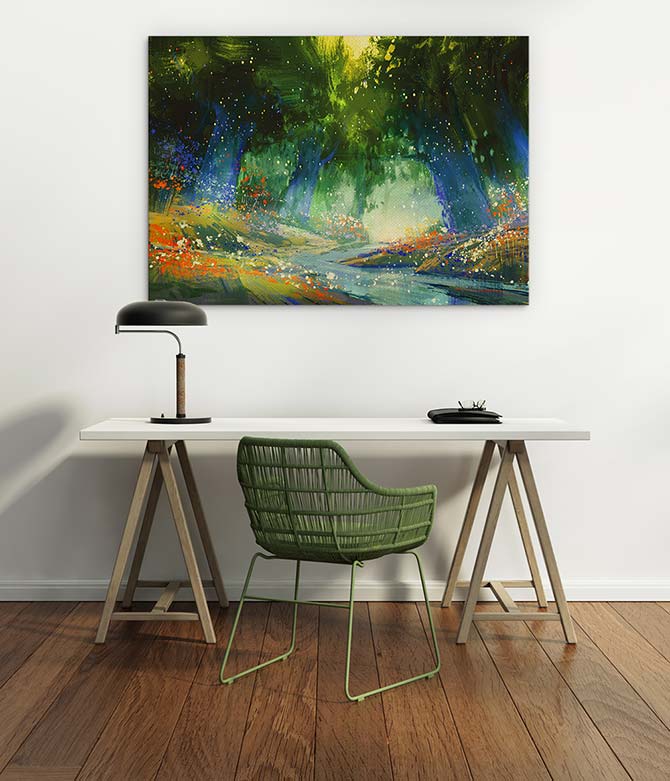
EYE GAZE: Landscape art like 'Mystic Forest' is ideal to hang above furniture like desks, sideboards and sofas.
Positioning art in tricky places
If your home is different from the ones you see in the magazines (you know, actually lived in), it can be tricky to find the right spot to hang art because there's either an air-conditioner in the way, televisions all over the place or storage shelves hiding clutter.
Walk around your home and find that white space or find a space that's cluttered with a mishmash of small, old rickety frames, paper cutouts or wall hangings. That's the wall to make over.
Do the measurements, consider symmetry and eye focus – and replace with one large feature print. You've got this 'adulting' thing figured out now.
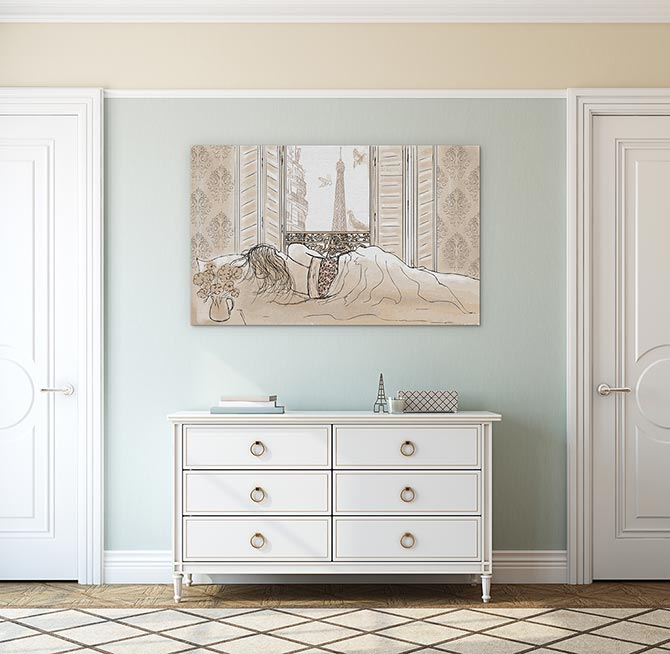
EXQUISITE: Declutter your living space and invite in a romantic print like 'Dreaming Of Paris' into your home.
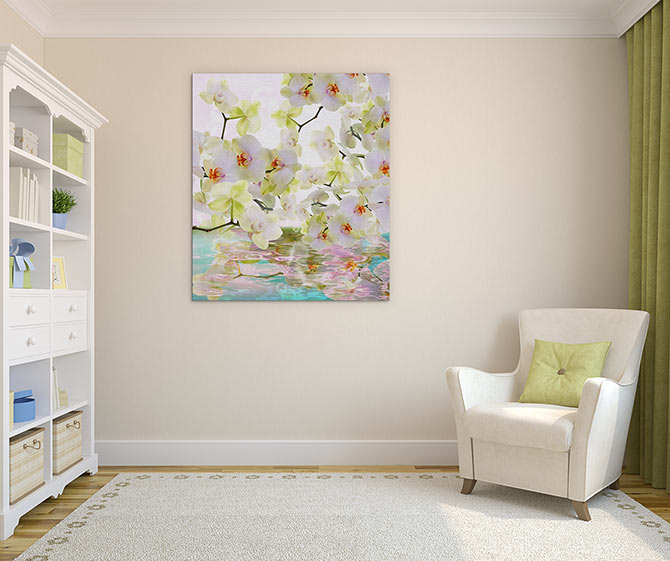
BLISS BOMB: Use the furniture rather than the wall to achieve balance with 'Japanese Orchid Reflections'.
Experiment with symmetry
Feeling daring? Rather than super sizing your art collection with one single print, you can follow the same rules and achieve the same results with multiple prints.
Don't just order multiple artworks on a whim. Symmetry means ensuring there is an even balance and it also means ensuring the combined total width and depth of the prints works well on a blank wall space or above a piece of furniture.
When hanging these prints, it's also about precision. Get out your pencil and ruler and make sure you get those measurements between the prints exactly right. 5-8 centimetres is a good rule of thumb.
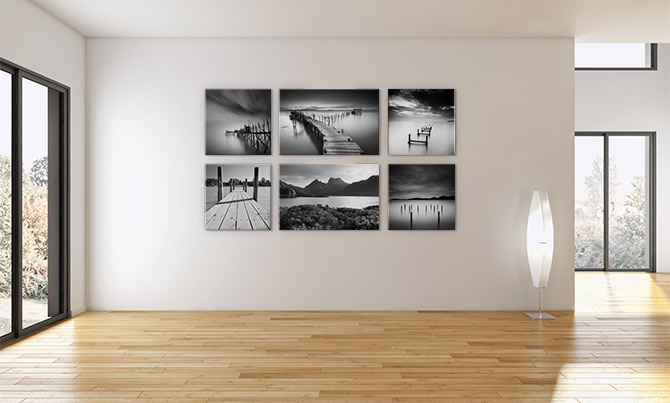
Embrace asymmetry
Here, the only limit is your imagination. There are no hard and fast rules to creating an asymmetrical display. The main tip we want to ram home is 'the more the merrier'.
Asymmetrical displays look amazing when there are many pieces competing for attention. If you prefer fewer prints, go for a symmetrical display instead.
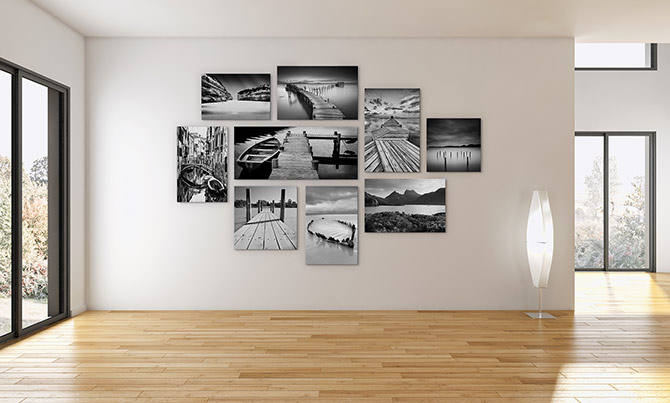
Source: https://www.wallartprints.com.au/blog/how-to-hang-pictures/


Leave a Comment